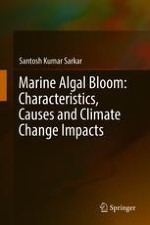
2018 | OriginalPaper | Buchkapitel
1. Algal Blooms: Basic Concepts
verfasst von : Santosh Kumar Sarkar
Erschienen in: Marine Algal Bloom: Characteristics, Causes and Climate Change Impacts
Verlag: Springer Singapore
Aktivieren Sie unsere intelligente Suche, um passende Fachinhalte oder Patente zu finden.
Wählen Sie Textabschnitte aus um mit Künstlicher Intelligenz passenden Patente zu finden. powered by
Markieren Sie Textabschnitte, um KI-gestützt weitere passende Inhalte zu finden. powered by